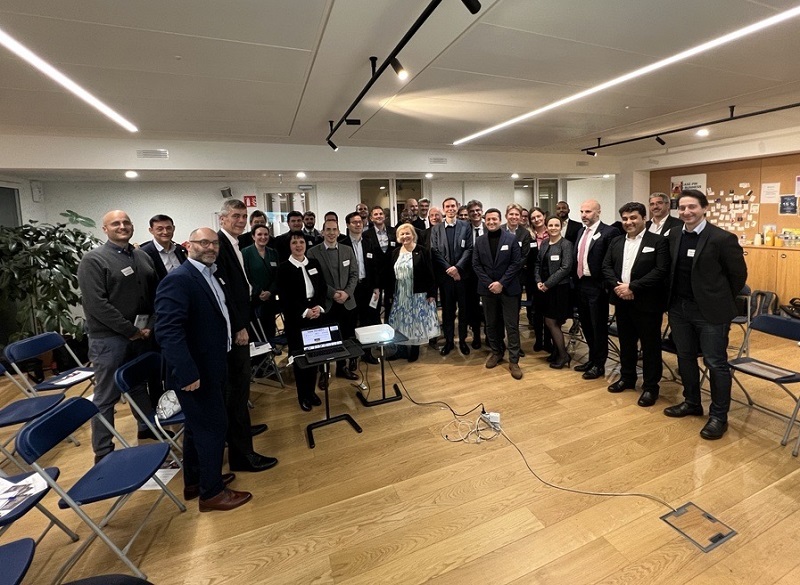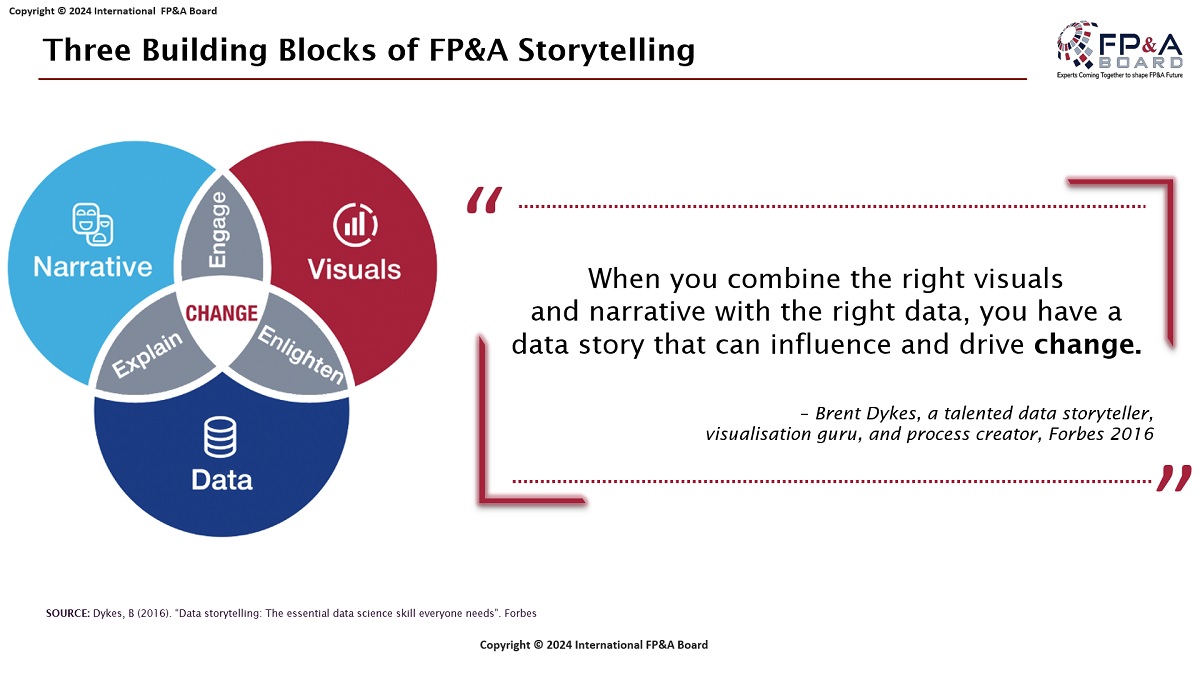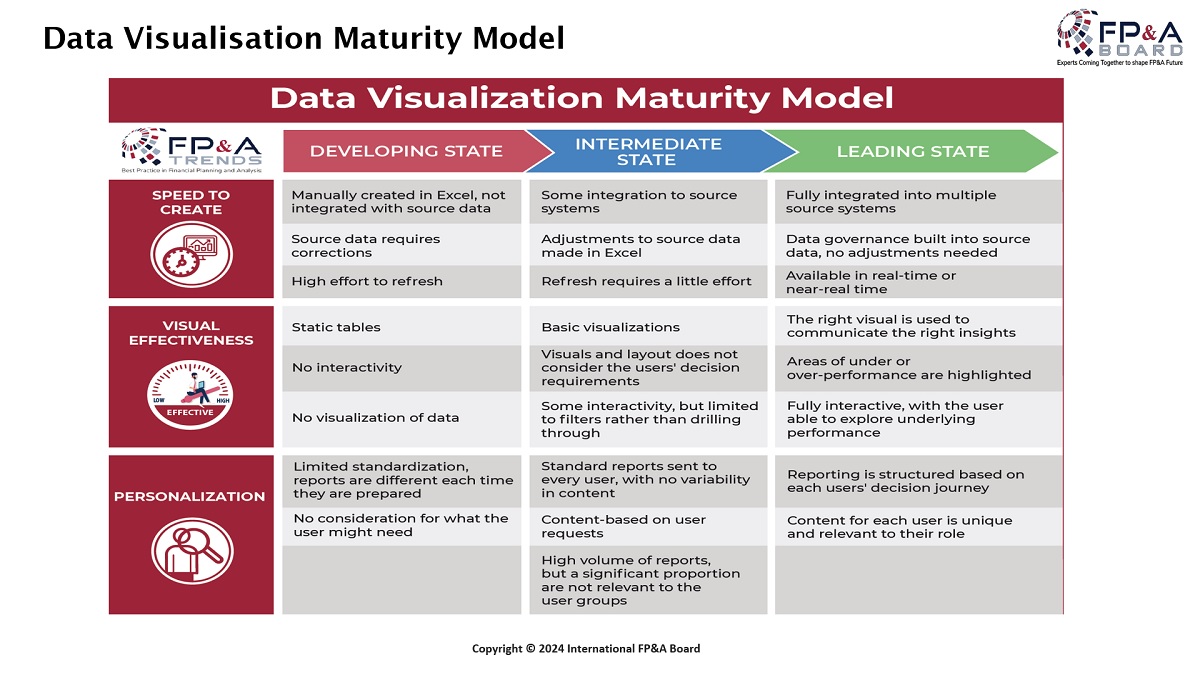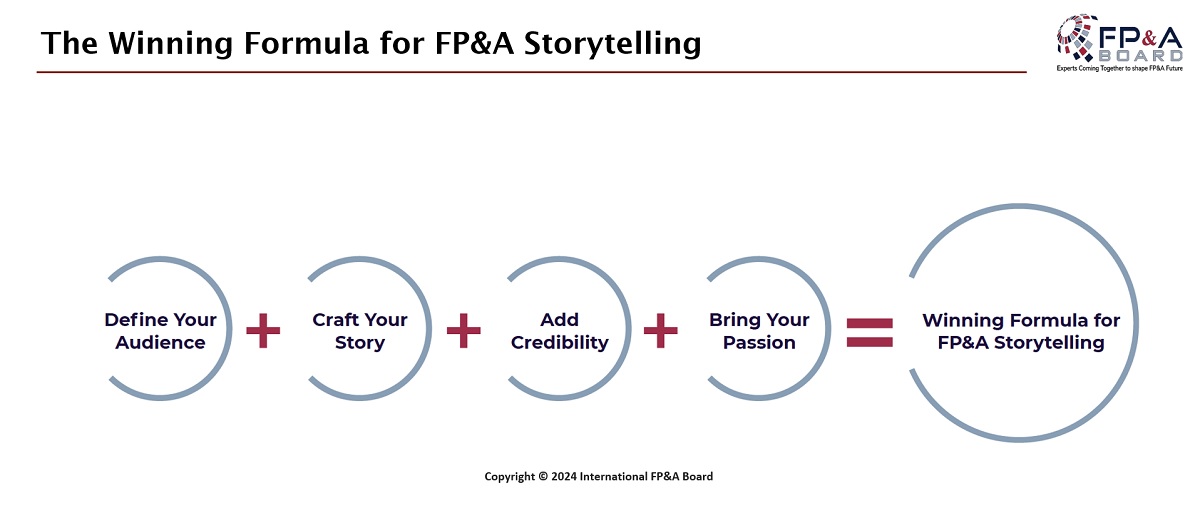The 6th face-to-face Paris FP&A Board took place at the modern premises of SPACES Les Halles on 6 February 2024. The event gathered 28 finance executives from companies such as GE Healthcare, L’Oreal, Mayoly Spindler, Dentsu, Renault, Plastic Omnium, Intercontinental Hotels and many others to discuss FP&A Storytelling in a data-driven world.

Figure 1: Paris FP&A Board, February 2024
The event started with the participants’ introductions. Each participant provided their name, position, and what they consider the critical factor for success in FP&A Storytelling. The following insights were cited as the critical factors of success most frequently:
- Understanding business
- Meaning
- Knowing your audience
- Data quality/management
- Right influence
After that, the Paris FP&A Board members discussed the most important skills for FP&A Storytelling identified by the International FP&A Board members from other chapters around the world, which are enumerated below:
- Knowing your audience
- Collaboration and Engagement
- Clear and Concise Message
- Simplicity
- Consistency
- Impact/Influence
- Driving Actions
- Data Quality
- Context
- Accuracy and Credibility
- Narrative
- Business Understanding
- Single Source of Truth
- Being a Good Business Partner
The rich discussions revolved around the presentation by Larysa Melnychuk, the CEO and Founder of the International FP&A Board, who moderated the event.
The event was sponsored by Wolters Kluwer/CCH® Tagetik in partnership with IWG and Michael Page.
What is FP&A Storytelling?
According to the discussion facilitator, FP&A Storytelling turns financial and non-financial data into a powerful story that builds trust, aligns teams, and drives decisions in business. The participants argued that finding a good storyteller in a team could be difficult, and then the forum transitioned to the dynamic discussion of three essential blocks of FP&A Storytelling.

Figure 2
The three pillars of FP&A Storytelling are narrative, visuals, and data. A narrative is the blueprint of a story and includes three dimensions: ethos (ethical), logos (rational) and pathos (emotional). To produce a good narrative, one must consider the audience and know the business. One of the participants said that we must deliver a true story, even if it is not a good one, and that the story should be told at the right time. We need to say what people need to know.

Figure 3
The second pillar is data visualisation. The FP&A Trends Data Visualisation Maturity Model helps to make both impactful and easy-to-understand visuals for your story. Charts can uncover insights that you would otherwise have missed with tables. Technological advancements in FP&A were acknowledged as crucial for effective data visualisation.
The last pillar is data that needs to be selected and validated in the most impactful way to drive our narrative and visualisation effectively.
Insights from Group Work
Following a lively discussion on the subject, the participants were divided into three working groups to share their insights on the three abovementioned pillars: narrative, visuals, and data.

Figure 4: Sylvain Mestrallet presents the results of Group Work, Paris FP&A Board, February 2024
The group that discussed the narrative reflected on how we can create a clear, engaging narrative tailored to our audience. They came up with the following ideas:
- A structured flow
- A context that creates a link/bridge
- Expectations: audience/language adaptation
- Make it simple and to the point
- Attitude: assume to play the role, be the rock, authentic, passionate, yourself, relax
- Building trust
- Fact-based
- Action-based
The second group worked on how we could design impactful, comprehensive visuals for our story. They have provided the following results:
- Colour coding
- Less is more; keep the essentials
- Simple graphs/Waterfalls
- Key messages (no long messages)/Highlights
- Images/Illustrations
- KPI with references (last year, budget…)/targets
- Avoid acronyms
- Trends
- Comparisons
- We can use Word/PowerPoint/Power BI depending on the subject
- Independent pages
- Test visuals with a non-financial audience
- Avoid dynamic appearance in your presentations
The last group reflected on how we can effectively identify and analyse data for our narrative. They presented the following insights to the Paris FP&A Board members:
- Reconcile data
- Organise consistency through the different processes
- Different layers of data are properly structured
- Maintain relevant data sets
- Understand drivers and organise data accordingly, simplifying it
- Clear assumptions and transparency on data limitations
- Flexibility, adaptability
- Cross-checking data with operations/sales/other departments, driving quality comments
Other key takeaways from the group work included the significance of listening and business understanding for a good story. Clarity and accuracy in delivering insights and effective communication between finance and business were also highlighted.
Conclusion
The participants of the 6th Paris FP&A Board agreed that delivering impactful stories could be difficult. Know the audience, set a clear objective, collect and analyse data, highlight key insights, organise the narrative, use visuals and context, and deliver an engaging story – these are the seven steps for effective FP&A Storytelling.

Figure 5
The session concluded with a discussion of a winning formula for FP&A Storytelling. The Paris FP&A Board members enriched their knowledge with valuable insights and engaged in lively networking after the event. The Paris FP&A Board allowed the participants to establish new connections and share feedback with colleagues, contributing to the continued growth and development of FP&A Storytelling practices.








